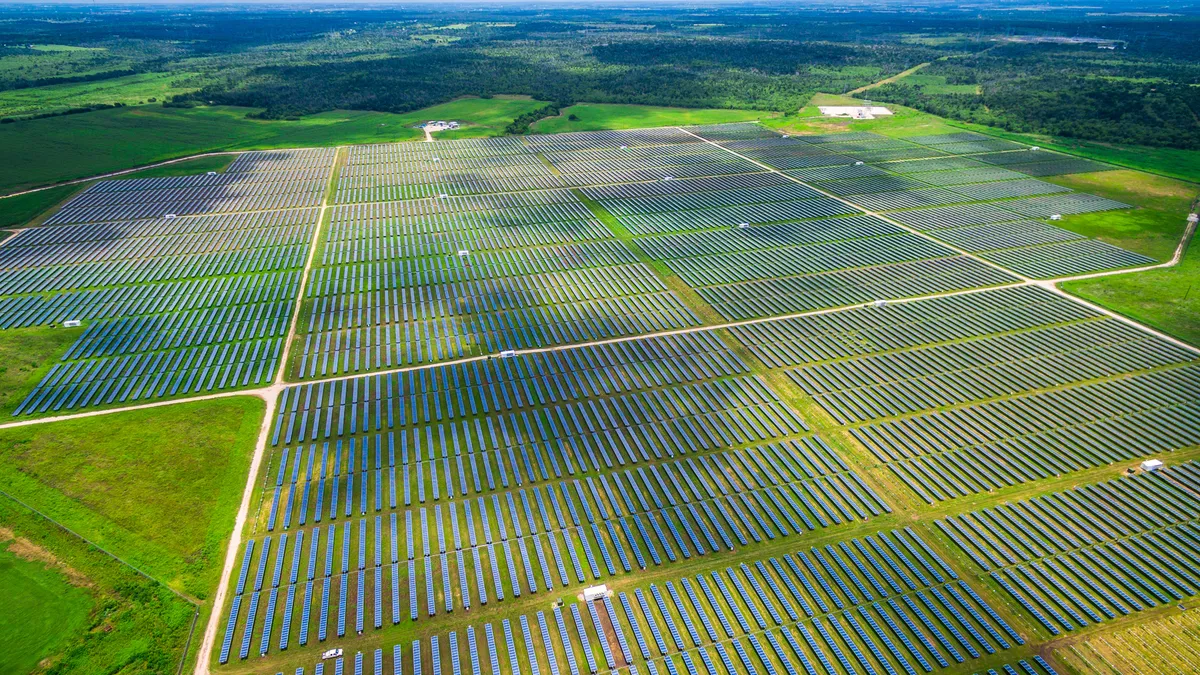Dive Brief:
-
Despite the exponential growth of the solar industry in Texas, increased load — not increased capacity — is the main cause of the record-breaking solar generation reported this winter, said Devon Lukas, a senior analyst with clean energy advisory firm REsurety.
-
Solar capacity within the Texas Interconnection has grown from 1.3 GW in 2019 to 18.8 GW, Lukas said. But solar is more likely to experience curtailment than wind generation, she said during a Thursday webinar.
-
The introduction of a production tax credit for solar generation under the Inflation Reduction Act could shift the balance of renewable energy resources in the future, Lukas said.
Dive Insight:
There's no question that solar generation is expanding rapidly in Texas, Lukas said, but the market dynamics that led to reports of record-breaking solar generation in the state this past winter are more complicated than first meets the eye.
Developers added 5 GW of solar generation in Texas in the first quarter of this year alone, Lukas said, but that doesn't mean that all this new solar energy will make it to the grid. Some projects will still experience transmission difficulties, she said. Others, she said, will experience curtailment during peak generation hours.
Curtailment typically occurs when the peak load on the Texas electrical grid remains below 20 GW, Lukas said. On Feb. 19, when the state set a new 17.2 GW record for solar generation, electrical demand exceeded this 20 GW threshold. But just a few days later, on Feb. 24, load remained below 20 GW, curtailing energy from some solar projects in spite of the fact that the solar generation potential on that day was 300 MW higher than Feb. 19.
About 20% of solar generation was curtailed on Feb. 24, Lukas said.
Solar is generally more likely than wind to experience curtailment as a result of the different tax incentives available to developers, Lukas explained. Wind developers that elected to take production tax credits are more likely to continue generating during peak daytime hours, when the value of energy can tip into negative price territory. Solar projects placed into service before 2022 are not eligible for such tax credits, so these projects are more likely to be curtailed, Lukas said.
These dynamics could change in the future as more PTC-eligible solar projects come online, Lukas added.
Increased energy storage could help renewable energy developers capture more energy sales and avoid curtailment, according to Carl Ostridge, senior vice president of analytics services at REsurety. But batteries must first reach a critical mass before they start to have an impact on broader energy markets, he said.
“You have to get to a certain point ... for those batteries to start behaving in a way that will help capture rates recover,” he said. “But I think we will start to see more of that in California, and then further out we will start to see it in [the Electric Reliability Council of Texas] as well.”














